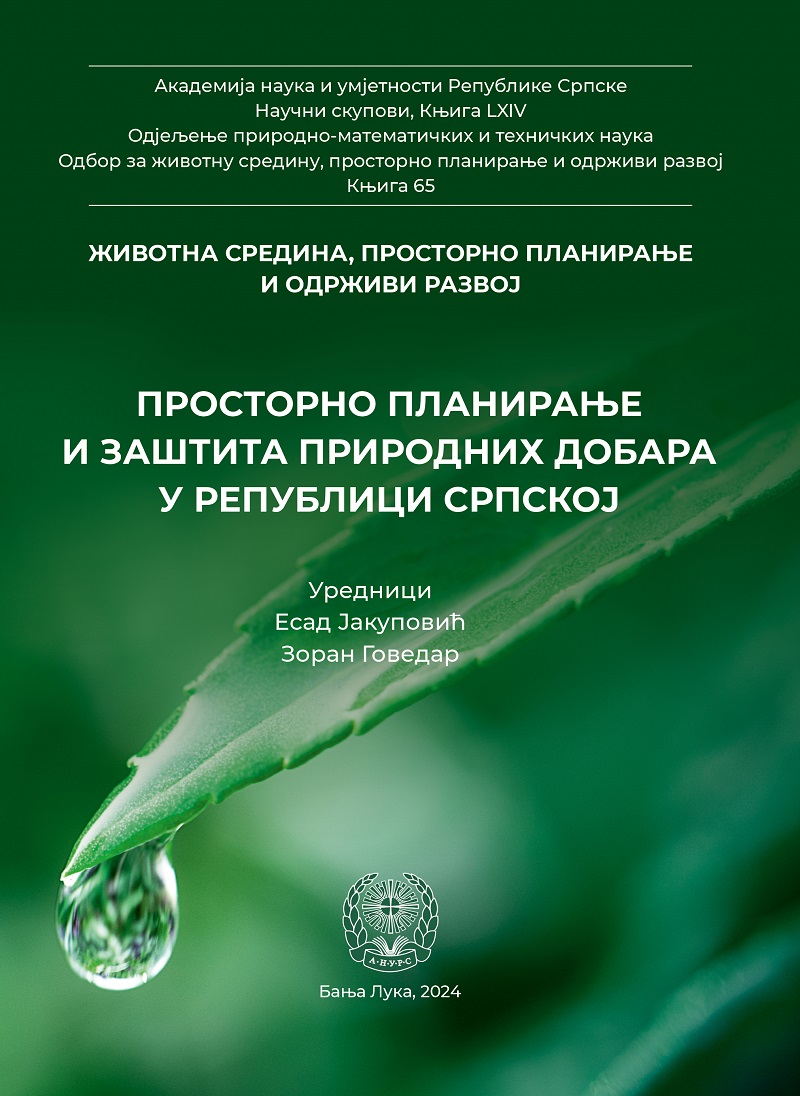THE ROLE AND SIGNIFICANCE OF THE CIRCULAR ECONOMY IN ENVIRONMENTAL PROTECTION
DOI:
https://doi.org/10.7251/ZSPPOR2402123PKeywords:
earth, waste reduction, energy conservation, resource depletion, land management, integrated water resources management, environmental protection, circular economyAbstract
Earth as a planet has limited natural resources and current levels of extraction and consumption are not sustainable. The organizational model for the production of goods and services in society is predominantly linear: resources are extracted, passed through the production process, used by society, and then discarded, ignoring external effects. While the linear economy was very successful in creating material wealth in industrialized countries until the 20th century, it has proven to be unsustainable in the new millennium, as such an approach depletes natural resources, piles up waste, contributes to climate change, and increases other forms of pollution and environmental degradation. environment. In contrast to the conventional linear economic model, where resources are extracted, used and discarded, the concept of circular (circular) economy is increasingly developing in the world, conceived as an ideal and instrumental model of development determined by the responsible and cyclical use of resources, in order to maintain their value in the economy, minimized the pressures on the environment and contributed to the improvement of socio-economic well-being. The collection of concepts that make up the circular economy enables the reduction of waste by incorporating the reuse of goods components by design through closed loop and cascade approaches, increasing the resilience of the economic system, preserving the environment, meeting the growing demands of an increasingly populated planet and increasing the operability and profitability of production. The application of circular economy principles brings cleaner air through the application of measures to reduce air pollution, encouraging the use of renewable energy sources and energy efficiency; cleaner water through the implementation of measures to prevent water pollution; regulated waste management system; addressing climate change and a number of other measures that ultimately bring a positive impact on people's health and the preservation of resources for future generations. Eco-innovations are one of the key tools for the transition from a linear to a circular economy and the fight against climate change. The circular economy reduces the pressure on natural resources, and is a prerequisite for achieving the goal of climate neutrality by 2050 and stopping the loss of biological diversity. Implementation of CE worldwide appears to be still in its early stages, mostly focused on recycling rather than reuse. Evidence suggests that CE has numerous advantages as it represents a unique policy strategy for avoiding resource depletion, energy conservation, waste reduction, land management and integrated water resources management. The transition to a system based on a circular economy represents an advantage not only for the market, by stimulating competitiveness and innovation, but also for the environment, reducing resource dependence and waste problems. On the other hand, challenges include lack of clear, standardized quantitative measurements and targets, data quality, lack of advanced technology, weak law enforcement, weak economic incentives, poor governance and lack of public awareness. The advantages are undeniable, and such innovative models lead to a reduction of dependence on raw materials by strengthening the relationship between the company and its customers, offering products with a high degree of customization, the emergence of a participatory economy based on digital technologies, etc. Despite widespread recognition of its benefits, implementation has been slow. Attempts tend to focus on short-term, immediately feasible actions rather than transformative, structural changes. The category of highly circular strategies targets processes such as the creation, design and development of products or services and involves significant investment in research, development and innovation. The lesson learned from successful experiences is that the transition to CE comes from the involvement of all actors of society and their capacity to connect and create appropriate patterns of cooperation and exchange. Previous research shows that the transition to a circular economy represents a systemic shift that contributes to the long-term resilience of society and local communities to climate change and economic shocks, creates business opportunities and jobs, and has lasting positive effects on the environment and society. The government should play a leading role in drawing up a macro-development plan, raising public awareness of the circular economy, establishing a system of laws and regulations, encouraging key industries, investing capital and providing technical support for the development of the circular economy. The circular economy research field still has a long way to go to create positive global, political, economic, scientific, social and environmental impacts. There is a need for studies in different sub-fields to highlight potential impacts in the present and future, as well as research to find ways to accelerate the economic transition towards a circular economy.

